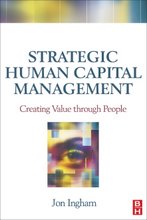I participated in a panel at Symposium's Talent and Leadership Development conference earlier this month. The panel was on social leadership, which I thought was an interesting though rather surprising topic to be discussed in this sort of form. And I was even more surprised when the conference chair opened the session by suggesting that social leadership was an increasingly topical term.
However, I was pleased by the suggestion and do believe that social leadership is something we should be talking about, although I'm still not sure that many people are.
If it is a topical term, then this must be mainly due to the efforts of Julian Stodd, author of the Social Leadership Handbook, as well as various other linked publications and his blog.
For Julian, social learning and leadership are required responses to the current Social Age, enabled by digital technology. I disagree with Julian on quite a bit of this. I don't think social collaborative technologies are a key part of social leadership, though they are certainly part of the reason that social leadership is needed. But leadership needs to be social however it's done, the technologies are just tools to help do it.
I also don't agree that social leadership subverts hierarchy. Hierarchical leadership isn't going to go away (neither are work, jobs or careers) and needs to be social as well.
And I don't agree that women are going to continue to earn less than men in the Social Age. I deal with this in The Social Organization. Social leadership is very much based on traits traditionally linked to women. This doesn't mean than men can't learn and demonstrate them, but it's often not the most natural way for many incompetent men to behave. The future belongs to socially competent women, and a few men, and rewards are going to shift to what's really important in this new world (I talked about this in my reward presentation in California too).
I'm also much more positive about HR!
But I do love Julian's key ideas about social leadership, eg that it is "authentic, grounded and free to anyone to develop, adapt and share. The starting point is 'How can I help you succeed?, not 'How can I get you to do...?'" And that humility sits at the heart of it. I also love the way that Julian acts as a social leader personally too. I may be an influencer / mover and shaker, and this can only be based on personal rather than positional influence (since I don't have a traditional position). But it's also achieved in rather traditional and perhaps rather egocentric, rather than more modern or social ways. I believe social leadership is important but I'm not putting myself forward as a role model of a social leader!
However, social leadership is something which is now being talked about by other people, even if they don't use the term. For example, at the California HR conference at the end of August, where I was speaking about reward innovation, my favourite session was from Linda Hill, author of Collective Genius. Linda spoke about leading innovation, but explained that this is about encouraging creative abrasion - a diversity of often competing and conflicting ideas; creative agility - testing ideas eg through design thinking by getting closer to the people you're designing for; and creative resolution - effective decision making vs either compromise or domination. So this is social leadership too.

I agreed with Linda's points, though I thought a lot of this was about organisation, not about leadership. Leaders need to ensure that the right organisation architecture is in place, but they don't necessarily need to design that architecture - this is a specialist competency and responsibility. What leaders need to do is to lead their people, and increasingly the networks between their people. This is the social bit. So I was pleased that Linda also recommended HR helping executives understand the network side of what they do.
However, this shouldn't just be about leaders' own personal, ego networks, which were the focus of Linda's presentation. It needs to extend to the development of broader organisational (and ecosystem) networks too.
But in my Symposium panel, I suggested that the role of leaders is also more complex than this. Firstly, leadership needs to be much more distributed than it is now. We do need everyone in any organisation to be a leader.
In addition, leaders need to lead all the various groups I refer to in The Social Organization. These include the teams doing the work of the organisation (especially when these are horizontal teams, not just groupings of individuals working in functions); communities of people relating with each other (I think communities can take a broader role than Julian); and the broader, more distributed networks of connections across the organisation. Innovation needs all of these to play an effective role (see Michael Arena, Adaptive Space) so leaders need to lead in each of these spaces too.
The main issue, which I describe in The Social Organization, is that leaders today tend to lose empathy as they rise up the organisational hierarchy (see, for example, Adam Galinsky, Friend & Foe). Is this because we promote and select the wrong people into leadership positions? (yes) Or because increasing power corrupts the people working in leadership positions? (yes as well) Either way, the move towards teams, communities and networks should help reduce the focus on hierarchy which is more evident and impactful in traditional functions.
But at the moment, there's not enough focus on helping executives, and others, develop empathy and humility, plus intimacy, interactivity, inclusion and intentionality, and create and support personal and organisational networks, and harness these in an increasingly varied set of organisational groups. So there are example of organisations that are doing great things in all the aspects of social leadership I've mentioned. And I was very impressed with the stories my co-panelists, Aimee Badcock at Philips and Robert Ritchie at Salford University, were sharing.
But I don't yet know of any companies which have completely transformed their approach to leadership development to do everything I've just listed here (eg differentiating leadership of communities from leadership of horizontal teams). And it is this which I think is now required as an effective response to the Social Age.
I've been doing more work with leadership teams on this agenda recently and do contact me if you want to know more:
- Consulting Research Speaking Training Writing
- Strategy - Talent - Engagement - Change and OD
- Contact me to create more value for your business
- jon [dot] ingham [at] strategic [dash] hcm [dot] com


















































